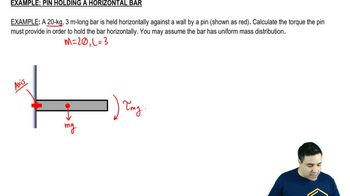Torque & Equilibrium definitions Flashcards
 Back
BackTorque & Equilibrium definitions
1/15
Terms in this set (15)
- EquilibriumA state where net force and net torque on an object are zero, resulting in no acceleration or rotational motion.
- Linear EquilibriumOccurs when the sum of all forces on an object is zero, leading to no linear acceleration.
- Rotational EquilibriumAchieved when the sum of all torques on an object is zero, preventing angular acceleration.
- Static EquilibriumA condition where both linear and rotational equilibrium are present, with no linear or angular velocity.
- TorqueA measure of the force causing an object to rotate, calculated as force times distance times sine of the angle.
- Axis of RotationThe line around which an object rotates, crucial in determining the effect of torques.
- Center of MassThe point in an object where its mass is evenly distributed and where weight force acts.
- FulcrumThe pivot point around which a lever or bar rotates, often providing a normal force.
- Normal ForceThe force exerted by a surface to support the weight of an object resting on it, acting perpendicular to the surface.
- Net ForceThe vector sum of all forces acting on an object, determining its linear acceleration.
- Net TorqueThe sum of all torques acting on an object, determining its angular acceleration.
- Angular VelocityThe rate of change of an object's angular position, zero in static equilibrium.
- Rigid BodyAn object with a fixed shape that does not deform under force, often used in equilibrium analysis.
- Counterclockwise TorqueA positive torque direction, typically opposing clockwise torque in equilibrium scenarios.
- Clockwise TorqueA negative torque direction, often balanced by counterclockwise torque in equilibrium.



